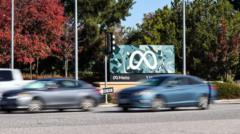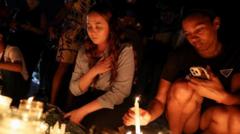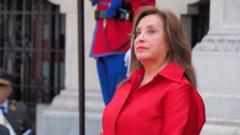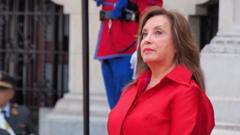The investigation into a helicopter crash in Australia has revealed that a faulty antenna contributed to a mid-air collision, resulting in four fatalities and several serious injuries.
Faulty Antenna Linked to Tragic Helicopter Collision in Australia
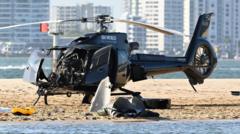
Faulty Antenna Linked to Tragic Helicopter Collision in Australia
Antenna malfunction cited as a factor in a deadly incident over the Gold Coast affecting tourism flights.
The January accident, involving two helicopters near Sea World on the Gold Coast, took place shortly after one had taken off and while the other was landing. Four people, including two British tourists, lost their lives in the crash, with multiple others sustaining severe injuries. An investigation by the Australian Transport Safety Bureau (ATSB) pointed to a lack of effective communication caused by a malfunctioning radio antenna, which prevented critical radio calls from being heard.
The ATSB's investigation illustrated a scenario wherein the pilot of the helicopter preparing to launch was not informed of a landing aircraft's presence due to the antenna issue. As a result, he received incorrect information about the airspace being clear from a ground crew member. The report indicated that the series of operational changes made by Sea World—intended to improve the tourist experience—diminished existing risk management protocols and increased the potential for unsafe flying conditions.
The collision itself occurred approximately 20 seconds after the departing helicopter took off. Tragically, all deceased were aboard the aircraft that was ascending. Among the victims were British couple Diane and Ron Hughes, along with Sydney resident Vanessa Tadros, while pilot Ashley Jenkinson also lost his life. The surviving passengers praised the returning helicopter pilot for executing a successful emergency landing amidst chaos.
The ATSB provided a total of 28 recommendations aimed at enhancing aviation safety, emphasizing the importance of thorough evaluations of operational changes to prevent adverse outcomes. "The most crucial lesson from this incident is that even alterations intended to enhance safety may yield unforeseen implications," said ATSB Chief Commissioner Angus Mitchell. "It is essential that any modifications to aviation procedures be subjected to a strict process to guarantee that overall safety remains uncompromised."
The ATSB's investigation illustrated a scenario wherein the pilot of the helicopter preparing to launch was not informed of a landing aircraft's presence due to the antenna issue. As a result, he received incorrect information about the airspace being clear from a ground crew member. The report indicated that the series of operational changes made by Sea World—intended to improve the tourist experience—diminished existing risk management protocols and increased the potential for unsafe flying conditions.
The collision itself occurred approximately 20 seconds after the departing helicopter took off. Tragically, all deceased were aboard the aircraft that was ascending. Among the victims were British couple Diane and Ron Hughes, along with Sydney resident Vanessa Tadros, while pilot Ashley Jenkinson also lost his life. The surviving passengers praised the returning helicopter pilot for executing a successful emergency landing amidst chaos.
The ATSB provided a total of 28 recommendations aimed at enhancing aviation safety, emphasizing the importance of thorough evaluations of operational changes to prevent adverse outcomes. "The most crucial lesson from this incident is that even alterations intended to enhance safety may yield unforeseen implications," said ATSB Chief Commissioner Angus Mitchell. "It is essential that any modifications to aviation procedures be subjected to a strict process to guarantee that overall safety remains uncompromised."










